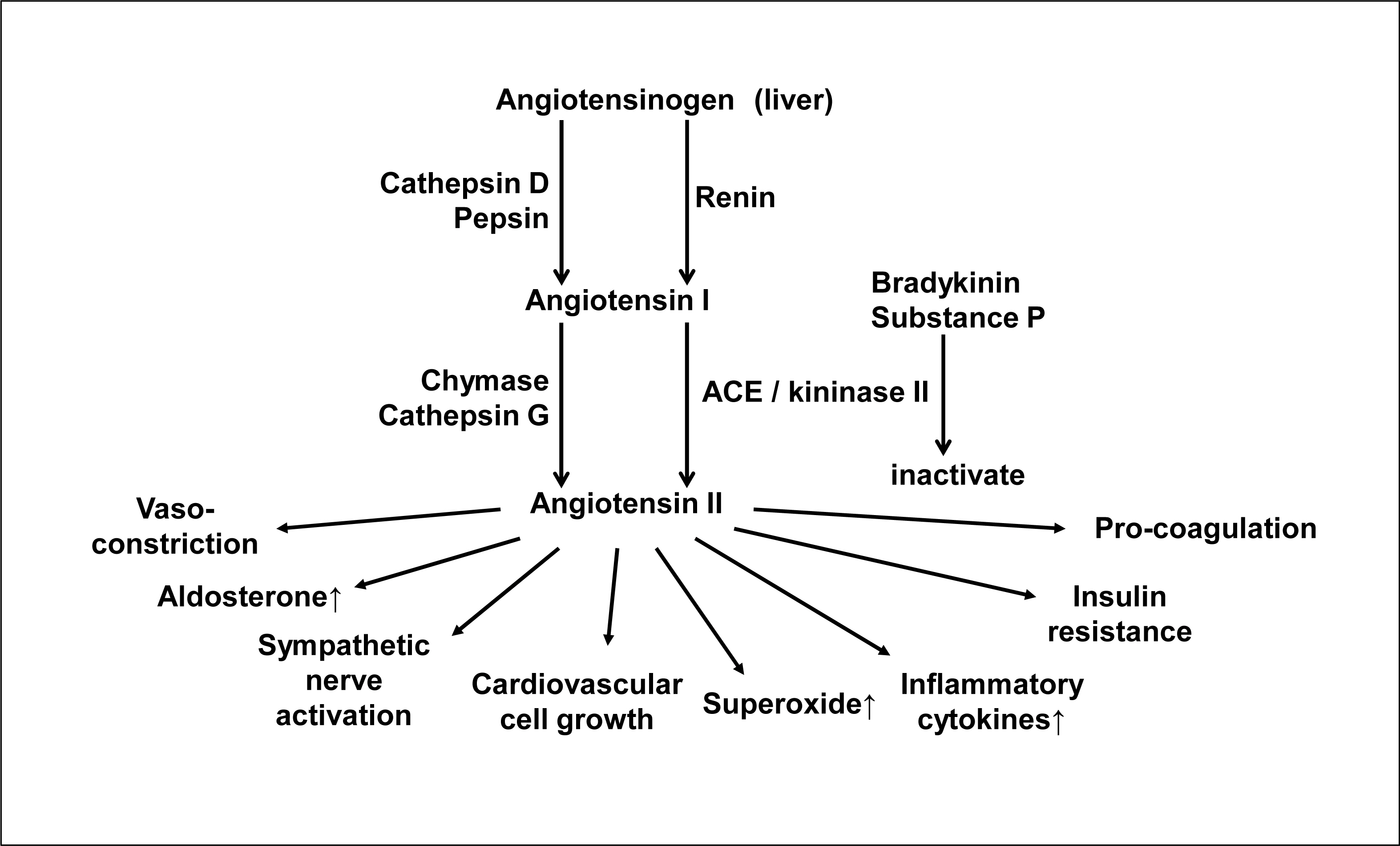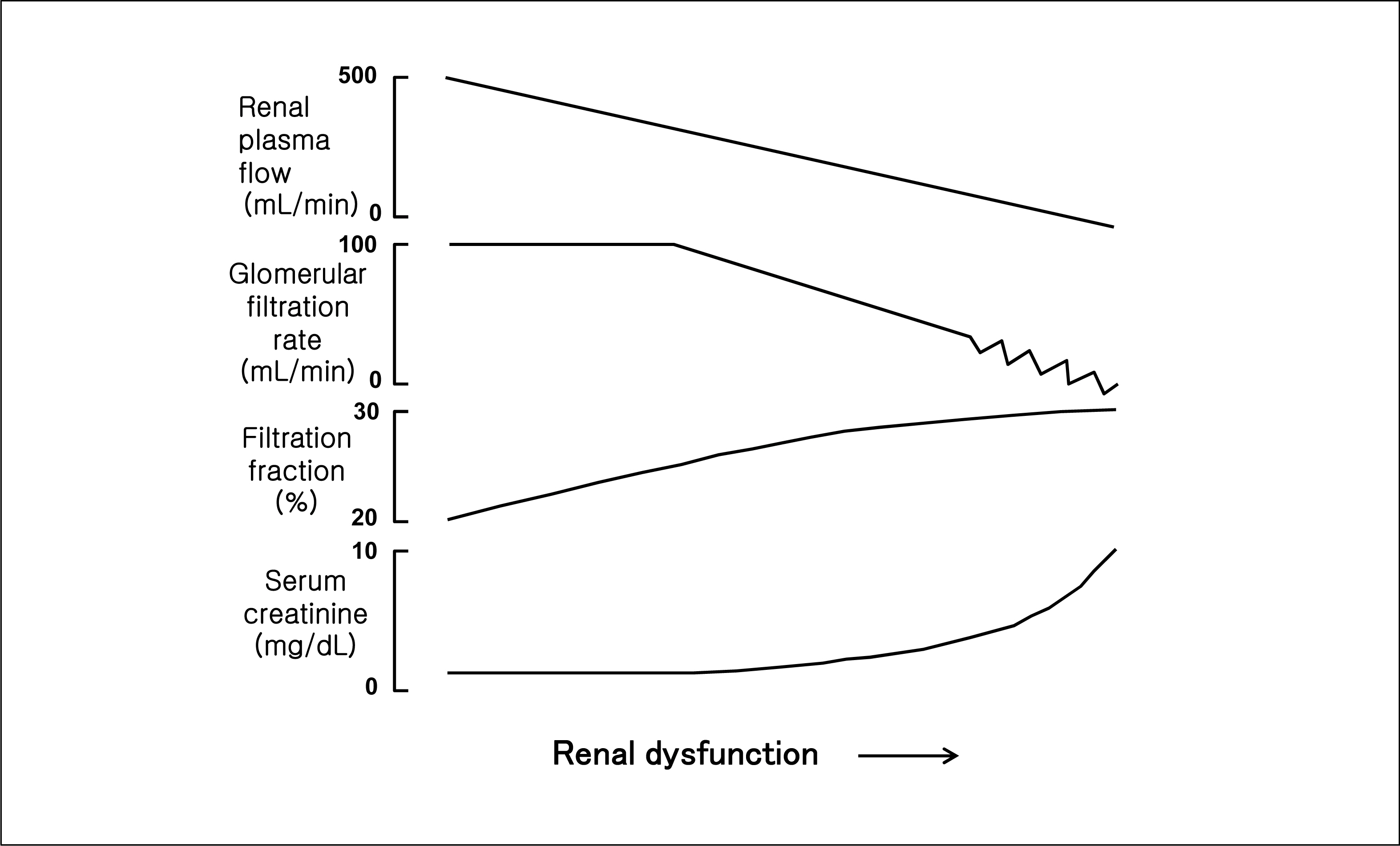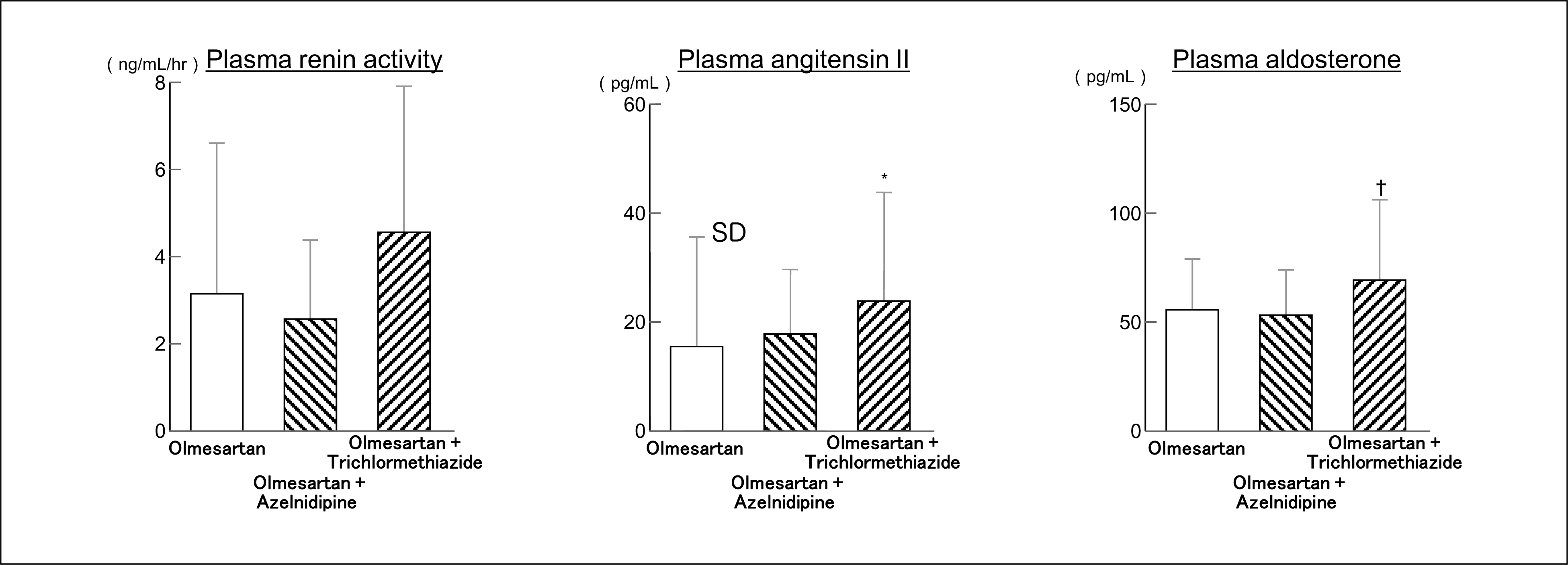J Korean Soc Hypertens.
2011 Sep;17(3):85-94. 10.5646/jksh.2011.17.3.85.
Antihypertensive Therapy Considering the Prevention of Vascular Aging
- Affiliations
-
- 1Department of Hypertension and Cardiorenal Medicine, Dokkyo Medical University, Mibu, Tochigi, Japan. isimitu@dokkyomed.ac.jp
- KMID: 1750385
- DOI: http://doi.org/10.5646/jksh.2011.17.3.85
Abstract
- Considering that an aging population is increasing due to a low birth rate in most developed nations, the maintenance of healthy state and physical and social activities is needed to maintain the national productivities. Among the diseases which deprive elderly people of activities and impose medical and care expenditure, cardiovascular diseases such as stroke, ischemic heart disease, heart failure and renal failure take major parts. These cardiovascular diseases occur based on the development and progression of arteriosclerotic vascular lesions, namely, vascular aging. Because hypertension is a major risk factor for vascular aging, the adequate control of blood pressure is pivotally important in order to prevent the incidence of cardiovascular events in the later stage of life. This is also concerned with the socio-economical issues and national productivity.
MeSH Terms
Figure
Cited by 2 articles
-
Redox Regulating Protein APE1/Ref-1 Expression is Increased in Abdominal Aortic Coarctation-induced Hypertension Rats
Sun Heon Song, Eun Jung Cho, Myoung Soo Park, Yu Ran Lee, Hee Kyoung Joo, Gun Kang, Shin Kwang Kang, Sunga Choi, Byeong Hwa Jeon
J Korean Soc Hypertens. 2012;18(3):126-135. doi: 10.5646/jksh.2012.18.3.126.Spontaneous Renal Hematoma Caused by Hypertension with Left Ventricular Hypertrophy
Byoung-Won Park, Min-Gyu Kong, Hye-Young Ju, Jin-Wook Chung, Duk-Won Bang, Min-Su Hyon, Soon-Hyo Kwon, Seong-Sook Hong
J Korean Soc Hypertens. 2012;18(2):71-74. doi: 10.5646/jksh.2012.18.2.71.
Reference
-
References
1. Isomaa B, Almgren P, Tuomi T, Forsen B, Lahti K, Nissen M, et al. Cardiovascular morbidity and mortality associated with the metabolic syndrome. Diabetes Care. 2001; 24:683–9.
Article2. Safar ME, Thomas F, Blacher J, Nzietchueng R, Bureau JM, Pannier B, et al. Metabolic syndrome and age-related progression of aortic stiffness. J Am Coll Cardiol. 2006; 47:72–5.
Article3. Lewington S, Clarke R, Qizilbash N, Peto R. Collins R; Prospective Studies Collaboration. Age-specific relevance of usual blood pressure to vascular mortality: a meta-analysis of individual data for one million adults in 61 prospective studies. Lancet. 2002; 360:1903–13.4. Chobanian AV, Bakris GL, Black HR, Cushman WC, Green LA, Izzo JL Jr, et al. The Seventh Report of the Joint National Committee on Prevention, Detection, Evaluation, and Treatment of High Blood Pressure: the JNC 7 report. JAMA. 2003; 289:2560–72.
Article5. Mancia G, De Backer G, Dominiczak A, Cifkova R, Fagard R, Germano G, et al. 2007 Guidelines for the management of arterial hypertension: The Task Force for the Management of Arterial Hypertension of the European Society of Hypertension (ESH) and of the European Society of Cardiology (ESC). Eur Heart J. 2007; 28:1462–536.6. Ogihara T, Kikuchi K, Matsuoka H, Fujita T, Higaki J, Horiuchi M, et al. The Japanese Society of Hypertension Guidelines for the Management of Hypertension (JSH 2009). Hypertens Res. 2009; 32:3–107.7. Struthers AD, MacDonald TM. Review of aldosterone-and angiotensin II-induced target organ damage and prevention. Cardiovasc Res. 2004; 61:663–70.8. Schmieder RE, Hilgers KF, Schlaich MP, Schmidt BM. Renin-angiotensin system and cardiovascular risk. Lancet. 2007; 369:1208–19.
Article9. Kuller LH, Tracy RP, Shaten J, Meilahn EN. Relation of C-reactive protein and coronary heart disease in the MRFIT nested case-control study. Multiple Risk Factor Intervention Trial. Am J Epidemiol. 1996; 144:537–47.10. Schillaci G, Pirro M. C-reactive protein in hypertension: clinical significance and predictive value. Nutr Metab Cardiovasc Dis. 2006; 16:500–8.
Article11. Hage FG, Szalai AJ. C-reactive protein gene polymorphisms, C-reactive protein blood levels, and cardiovascular disease risk. J Am Coll Cardiol. 2007; 50:1115–22.
Article12. Steinberg D, Parthasarathy S, Carew TE, Khoo JC, Witztum JL. Beyond cholesterol. Modifications of low-density lipoprotein that increase its atherogenicity. N Engl J Med. 1989; 320:915–24.13. Witztum JL, Steinberg D. Role of oxidized low density lipoprotein in atherogenesis. J Clin Invest. 1991; 88:1785–92.
Article14. Mertens A, Holvoet P, Oxidized LDL and, HDL . antagonists in atherothrombosis. FASEB J. 2001; 15:2073–84.15. Nada T, Nomura M, Koshiba K, Kawano T, Mikawa J, Ito S. Clinical study with azelnidipine in patients with essential hypertension. Antiarteriosclerotic and cardiac hypertrophy-inhibitory effects and influence on autonomic nervous activity. Arzneimittelforschung. 2007; 57:698–704.16. Ohmura C, Watada H, Shimizu T, Sakai K, Uchino H, Fujitani Y, et al. Calcium channel blocker, azelnidipine, reduces lipid hydroperoxides in patients with type 2 diabetes independent of blood pressure. Endocr J. 2007; 54:805–11.
Article17. Remuzzi G, Perico N, Macia M, Ruggenenti P. The role of renin-angiotensin-aldosterone system in the progression of chronic kidney disease. Kidney Int Suppl. 2005; S57–65.
Article18. Brewster UC, Setaro JF, Perazella MA. The renin-angiotensin-aldosterone system: cardiorenal effects and implications for renal and cardiovascular disease states. Am J Med Sci. 2003; 326:15–24.
Article19. London GM, Marchais SJ, Guerin AP, Pannier B. Arterial stiffness: pathophysiology and clinical impact. Clin Exp Hypertens. 2004; 26:689–99.
Article20. Matsui Y, Kario K, Ishikawa J, Eguchi K, Hoshide S, Shimada K. Reproducibility of arterial stiffness indices (pulse wave velocity and augmentation index) simultaneously assessed by automated pulse wave analysis and their associated risk factors in essential hypertensive patients. Hypertens Res. 2004; 27:851–7.
Article21. Ito N, Ohishi M, Takagi T, Terai M, Shiota A, Hayashi N, et al. Clinical usefulness and limitations of brachial-ankle pulse wave velocity in the evaluation of cardiovascular complications in hypertensive patients. Hypertens Res. 2006; 29:989–95.
Article22. Takaki A, Ogawa H, Wakeyama T, Iwami T, Kimura M, Hadano Y, et al. Cardio-ankle vascular index is superior to brachial-ankle pulse wave velocity as an index of arterial stiffness. Hypertens Res. 2008; 31:1347–55.
Article23. Smith DH, Dubiel R, Jones M. Use of 24-hour ambulatory blood pressure monitoring to assess antihypertensive efficacy: a comparison of olmesartan medoxomil, losartan potassium, valsartan, and irbesartan. Am J Cardiovasc Drugs. 2005; 5:41–50.24. Go AS, Chertow GM, Fan D, McCulloch CE, Hsu CY. Chronic kidney disease and the risks of death, cardiovascular events, and hospitalization. N Engl J Med. 2004; 351:1296–305.
Article25. Bakris GL, Williams M, Dworkin L, Elliott WJ, Epstein M, Toto R, et al. Preserving renal function in adults with hypertension and diabetes: a consensus approach. National Kidney Foundation Hypertension and Diabetes Executive Committees Working Group. Am J Kidney Dis. 2000; 36:646–61.26. Campese VM, Mitra N, Sandee D. Hypertension in renal parenchymal disease: why is it so resistant to treatment? Kidney Int. 2006; 69:967–73.
Article27. Bigazzi R, Bianchi S, Baldari D, Campese VM. Microal buminuria predicts cardiovascular events and renal insufficiency in patients with essential hypertension. J Hypertens. 1998; 16:1325–33.28. Jensen JS, Feldt-Rasmussen B, Strandgaard S, Schroll M, Borch-Johnsen K. Arterial hypertension, microalbuminuria, and risk of ischemic heart disease. Hypertension. 2000; 35:898–903.
Article29. Yuyun MF, Khaw KT, Luben R, Welch A, Bingham S, Day NE, et al. Microalbuminuria independently predicts all-cause and cardiovascular mortality in a British population: The European Prospective Investigation into Cancer in Norfolk (EPIC-Norfolk) population study. Int J Epidemiol. 2004; 33:189–98.
Article30. Klausen K, Borch-Johnsen K, Feldt-Rasmussen B, Jensen G, Clausen P, Scharling H, et al. Very low levels of microalbuminuria are associated with increased risk of coronary heart disease and death independently of renal function, hypertension, and diabetes. Circulation. 2004; 110:32–5.
Article31. Elliott WJ. Is fixed combination therapy appropriate for initial hypertension treatment? Curr Hypertens Rep. 2002; 4:278–85.
Article32. Mori H, Ukai H, Yamamoto H, Saitou S, Hirao K, Yamauchi M, et al. Current status of antihypertensive prescription and associated blood pressure control in Japan. Hypertens Res. 2006; 29:143–51.
Article33. Dahlof B, Sever PS, Poulter NR, Wedel H, Beevers DG, Caulfield M, et al. Prevention of cardiovascular events with an antihypertensive regimen of amlodipine adding perindopril as required versus atenolol adding bendroflumethiazide as required, in the Anglo-Scandinavian Cardiac Outcomes Trial-Blood Pressure Lowering Arm (ASCOT-BPLA): a multicentre randomised controlled trial. Lancet. 2005; 366:895–906.34. Williams B, Lacy PS, Thom SM, Cruickshank K, Stanton A, Collier D, et al. Differential impact of blood pressure-lowering drugs on central aortic pressure and clinical outcomes: principal results of the Conduit Artery Function Evaluation (CAFE) study. Circulation. 2006; 113:1213–25.35. Jamerson K, Weber MA, Bakris GL, Dahlof B, Pitt B, Shi V, et al. Benazepril plus amlodipine or hydrochlorothiazide for hypertension in high-risk patients. N Engl J Med. 2008; 359:2417–28.
Article36. Bakris GL, Sarafidis PA, Weir MR, Dahlof B, Pitt B, Jamerson K, et al. Renal outcomes with different fixed-dose combination therapies in patients with hypertension at high risk for cardiovascular events (ACCOMPLISH): a prespecified secondary analysis of a randomised controlled trial. Lancet. 2010; 375:1173–81.
Article37. Ishimitsu T, Numabe A, Masuda T, Akabane T, Okamura A, Minami J, et al. Angiotensin-II receptor antagonist combined with calcium channel blocker or diuretic for essential hypertension. Hypertens Res. 2009; 32:962–8.
Article38. Lupo E, Locher R, Weisser B, Vetter W. In vitro antioxidant activity of calcium antagonists against LDL oxidation compared with alpha-tocopherol. Biochem Biophys Res Commun. 1994; 203:1803–8.39. Bakris GL, Toto RD, McCullough PA, Rocha R, Purkayastha D, Davis P, et al. Effects of different ACE inhibitor combinations on albuminuria: results of the GUARD study. Kidney Int. 2008; 73:1303–9.
Article40. Ishimitsu T, Ohno E, Nakano N, Furukata S, Akashiba A, Minami J, et al. Combination of angiotensin II receptor antagonist with calcium channel blocker or diuretic as antihypertensive therapy for patients with chronic kidney disease. Clin Exp Hypertens. 2011; 33:366–72.
Article41. Messerli FH, Mancia G, Conti CR, Hewkin AC, Kupfer S, Champion A. Dogma disputed: can aggressively lowering blood pressure in hypertensive patients with coronary artery disease be dangerous? Ann Intern Med. 2006; 144:884–93.
Article42. Cooper-DeHoff RM, Gong Y, Handberg EM, Bavry AA, Denardo SJ, Bakris GL, et al. Tight blood pressure control and cardiovascular outcomes among hypertensive patients with diabetes and coronary artery disease. JAMA. 2010; 304:61–8.
Article
- Full Text Links
- Actions
-
Cited
- CITED
-
- Close
- Share
- Similar articles
-
- Is amlodipine more cardioprotective than other antihypertensive drug classes?
- Are Vascular Aging and Atherosclerosis Synonymous?
- Aortic Stiffness in Patients with Deep and Lobar Intracerebral Hemorrhage: Role of Antihypertensive Drugs and Statins
- Prevention and Treatment of Vascular Dementia
- Could Management of Blood Pressure Prevent Dementia in the elderly?







